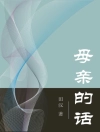Islamic glass and its craftsmanship in the Medieval period are known almost exclusively from Middle Eastern literature. The study of the structures of the workshop and the very rich glass assemblage from Sabra al-Mansuriya (Kairouan), the Fatimid capital founded in 947/948 and destroyed in 1057, proves that Ifriqiya followed the technological evolutions of glass craftsmanship. An examination of the furnaces and the various artefacts discovered highlights the double vocation of a palatial factory: to produce glass and glazed ceramics. From this particular workshop, installed in the wing of a palace, we found everyday glassware as well as more luxurious types, some with very specific forms, others reproducing models known throughout the Islamic world. These productions are local and imported – distinguished through morphological and chemical analyzes – and form the basis of a first typology of glass used in Ifriqiya from the 10th to 11th century. Architectural glass, partly made on site, is also abundant. The crown-glass of different colours, used whole or in small fragments, adorned the openwork panel walls with various carvings. The windows and their glass offered a rich polychrome and a complex decorative syntax, reflecting significant technical mastery and the desire to display economic and political power.
Daniele Foy
Le verre de Sabra al-Mansuriya – Kairouan, Tunisie – milieu Xe-milieu XIe siecle [PDF ebook]
Production et consommation: vaisselle – contenants – vitrages
Le verre de Sabra al-Mansuriya – Kairouan, Tunisie – milieu Xe-milieu XIe siecle [PDF ebook]
Production et consommation: vaisselle – contenants – vitrages
قم بشراء هذا الكتاب الإلكتروني واحصل على كتاب آخر مجانًا!
لغة فرنسي ● شكل PDF ● صفحات 300 ● ISBN 9781789696622 ● الناشر Archaeopress Publishing Ltd ● نشرت 2020 ● للتحميل 3 مرات ● دقة EUR ● هوية شخصية 8129962 ● حماية النسخ Adobe DRM
يتطلب قارئ الكتاب الاليكتروني قادرة DRM












